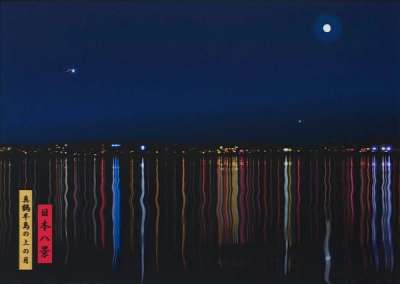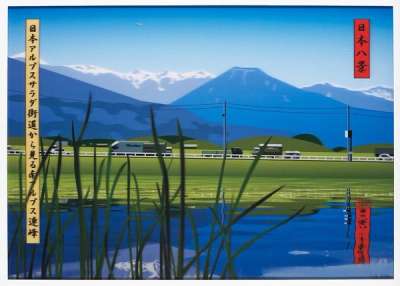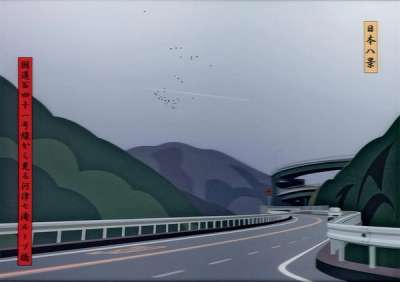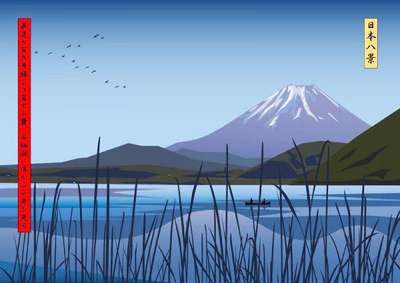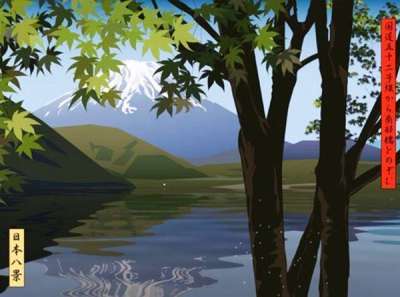Japanese
Landscapes
Closely referencing Japanese art history, Julian Opie uses two strips of calligraphy in each of his Japanese landscape prints, inspired by the woodblock prints of Hiroshige. The work of the Ukiyo-e school shows an apparent simplicity, attained by underlying complexity, with which Opie understandably feels a great affinity.
Julian Opie Japanese Landscapes For sale
Japanese Landscapes Value (5 Years)
Julian Opie's Japanese Landscapes series has historically shown more modest results compared with the artist’s wider oeuvre, with auction prices ranging from £1700 to £5500. Average annual growth has remained modest at -12.59%, with certain works seeing declines in value. Over 10 total auction appearances, average selling prices have held steady around £3142. This series appeals to collectors seeking accessible entry points into Julian Opie’s print market.
Japanese Landscapes Market value
Auction Results
| Artwork | Auction Date | Auction House | Return to Seller | Hammer Price | Buyer Paid |
|---|---|---|---|---|---|
 View Of Loop Bridge Seen From Route 41 In The Seven Falls Area Julian Opie Signed Print | 17 Jan 2024 | Phillips London | £1,360 | £1,600 | £2,150 |
 View Of The Mountains From The Nihon Alps Salada Road Julian Opie Signed Mixed Media | 21 Sept 2023 | Phillips London | £1,743 | £2,050 | £2,800 |
 View Of Mount Fuji With Daisies From Route 300 Julian Opie Signed Mixed Media | 21 Sept 2023 | Phillips London | £4,250 | £5,000 | £7,000 |
 View Of Moon Over Manatsuru Peninsula Julian Opie Signed Mixed Media | 25 Oct 2019 | Phillips New York | £1,870 | £2,200 | £2,900 |
Sell Your Art
with Us
with Us
Join Our Network of Collectors. Buy, Sell and Track Demand
Meaning & Analysis
Julian Opie’s Japanese Landscape series from 2009 shows a set of six prints inspired by a trip taken by the artist around Mount Fuji in Japan. Originally displayed as a series of animations based on double and triple LCD screens, this series is characteristic of Opie’s highly recognisable landscape style.
Closely referencing Japanese art history, Opie uses two strips of calligraphy in each landscape print to make clear his inspiration from the woodblock prints of Hiroshige. Interestingly, in prints such as View Of The Mountains From The Nihon Alps Salada Road, Opie incorporates these strips into the scene itself, showing the pond weed covering the strip on the left and the strip on the right is reflected in the water.
Much of Opie’s work has been compared to the digitally rendered landscapes of video games in the way that they mimic a simultaneously familiar yet otherworldly sphere. Indeed, this print is uncanny in the sense of familiarity it strikes within the viewer, in part due to Opie’s depersonalised, slick style rendered through computer technology. This video game aesthetic is typical of Opie’s landscape work from the late 1990s that encourages the viewer to step into a stylised representation of the world. Speaking of his work in relation to its ‘otherworldliness’, Opie has said, “I think my work is about trying to be happy… I want the world to seem like the kind of place you’d want to escape into… Mundane things are just as exciting as all the things you might imagine escaping into.”
The Japanese Landscapes series is devoid of any human presence, aside from the inclusion of some cars in the distance. Additionally, due to Opie’s slick visual style, the prints in the series are depersonalised to the point of commodification whereby the viewer is able to make their own imaginative journey through each image.

